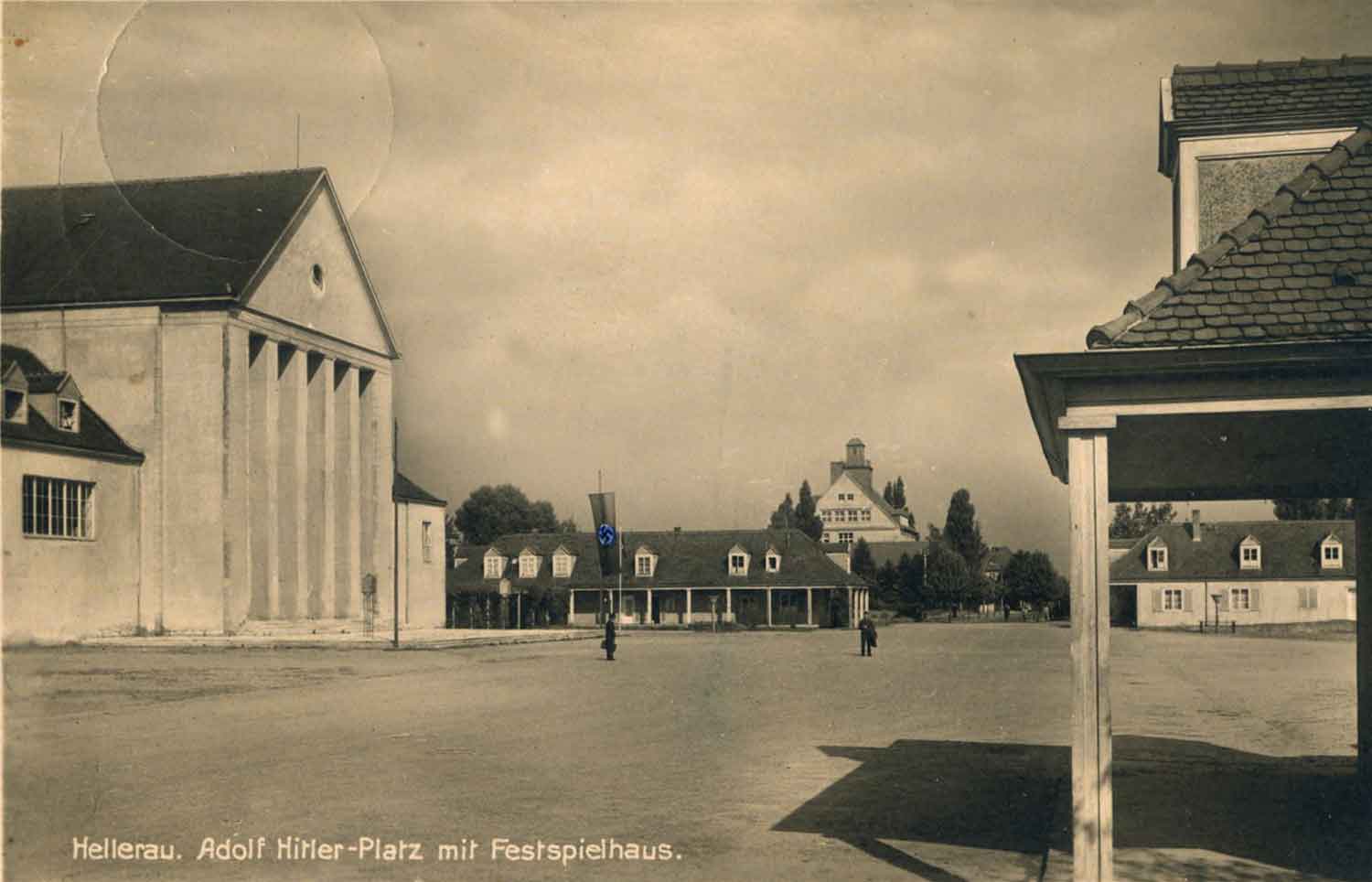The Festspielhaus (Festival Theatre) grounds under National Socialism
After the First World War, the Festspielhaus (Festival Theatre) grounds had lost their cultural significance, even though the prestigious location was still used a few times for opera productions. In 1938, the Reich Ministry of the Interior decided to house a police school on the grounds, for which major renovation work was carried out that significantly changed the square’s external appearance. From then on, the military determined the use of the site. Even after the end of the Second World War, cultural use of the area was out of the question, as the Red Army remained on site until 1992.
Content of this article

Festspielhaus, postcard around 1940.
Private property Dr.-Ing. Nils Schinker.
Loss of culture
After the First World War, the Festspielhaus (Festival Theatre) grounds had lost their importance – on the one hand due to the financial difficulties caused by the Great Depression, and on the other hand due to the withdrawal of the artistic and cultural avant-gardes that had once made the venue so attractive internationally. The phase of the site being used by other parties continued until the 1930s. Temporary dance events and rentals were the exception. One brief highlight was the opera performances by the Dresden State Opera in 1932. There were many ideas to use the Festspielhaus (Festival Theatre) and its surrounding grounds, for example industrially with a light bulb and film factory.
After the National Socialists came to power in 1933, local stakeholders also slowly assimilated into the divisive Nazi society. A new interest awoke in the prestigious location, which was repeatedly used to stage official Nazi functions. Various ideas for the future use of the Festspielhaus (Festival Theatre) and its establishment in Nazi cultural life were mooted. For the first Reich Theatre Week in Dresden from 27 to 30 May 1934, the Festspielhaus (Festival Theatre) was used as a venue for several performances by the State Opera, with Joseph Goebbels also visiting the venue. There were also plans to establish a Reichsschule für Musik und Theater (Reich School for Music and Theatre).
Military use and remodel for the police
Military interest increasingly grew in the Festspielhaus (Festival Theatre) and its surrounding buildings. The Festspielhaus (Festival Theatre) was temporarily rented out to the air force in 1936, but the real character of the site came in 1938, when the Reich Ministry of the Interior decided to establish a police school here. As a result, the area was integrated into the military-industrial complex in the north of Dresden, which included numerous nearby armament factories, but also the Klotzsche aerial military college.
Extensive construction work began, for which the area was cleared and closed to the public. The large single-storey boarding houses to the east and west of the square were demolished. Two barrack wings were built in their place using the latest technology, for example, the special Kroher trusses for the roof construction, which significantly changed the square’s external appearance.
Establishment in the town
The new institution was integrated into the town in many ways, for example through supplier relationships, and increased demand among local service providers and restaurants. The decision in favour of the military location therefore drew little criticism and was quickly seen as an opportunity to boost Hellerau’s importance.
From 1939 onwards, members of the SS were responsible for training, so the police training battalion often also recruited the next generation for the local SS structures in Dresden, which were involved in the National Socialist war of extermination in the East. Shortly before the end of the war, the Hellerau units still tried to defend Dresden, which had already been bombed because Breslau was surrounded by enemies and had been supplied from the Klotzsche military airport since mid-February 1945, but after the unconditional surrender of the German armed forces, the Festspielhaus (Festival Theatre) site was also conquered by the Red Army. It was to remain the owner of the square until 1992.
